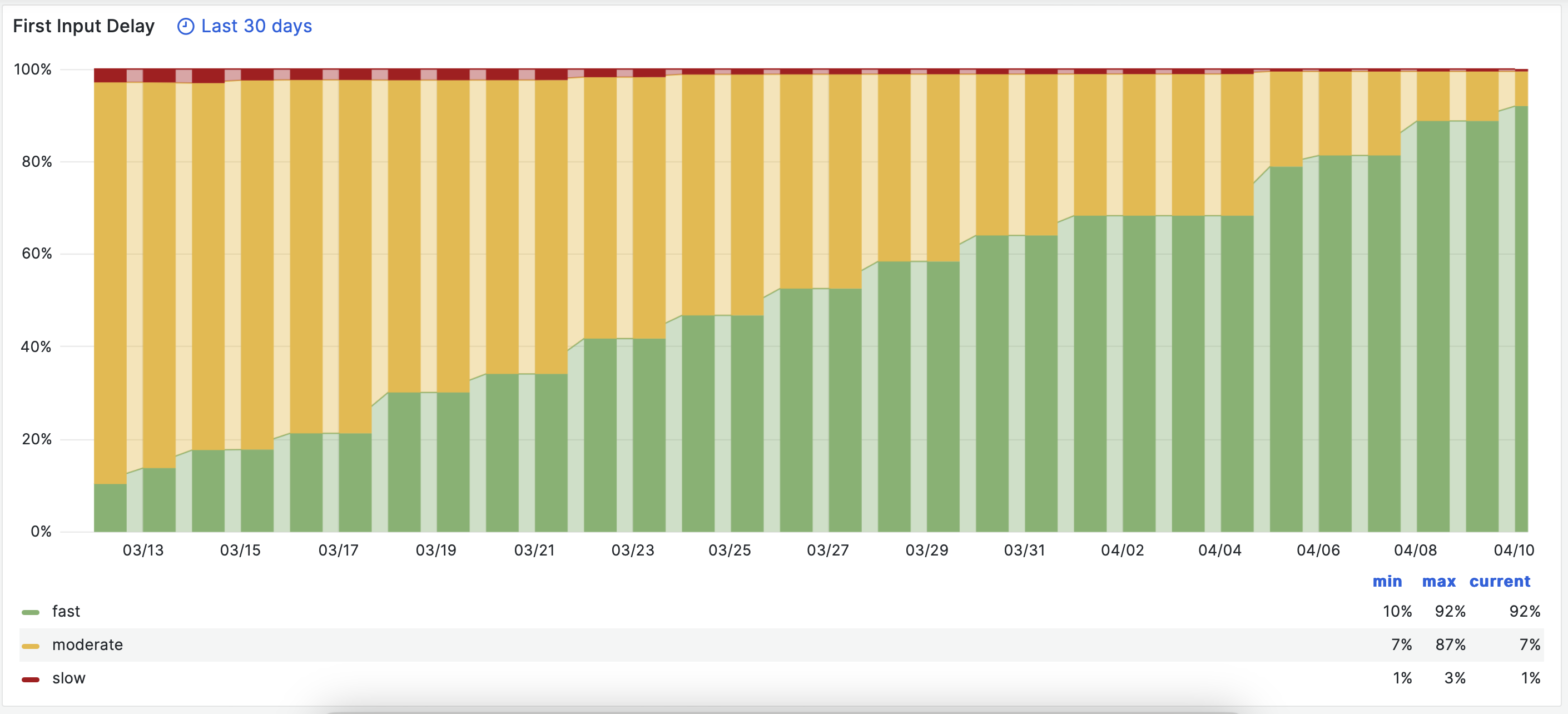User Story
- Team-facing: As the Web Team at Wikimedia, I do not want our site to be unduly penalized in search rankings for a "Poor" Interaction to Next Paint (INP) score in the Google Search Console for users on mobile devices using our desktop site, when Google changes its search methodology on March 12, 2024.
- User-facing: As a mobile user accessing the desktop Vector 2022 version of Wikipedia (via "desktop site" link in footer ), I want pages to load and become interactive more quickly after I perform an action, so I can enjoy a smoother and more responsive experience similar to desktop users.
Context
In this ticket, we investigated reports that our Interaction to Next Paint score was rated as "Poor", a spike we prioritized because Google will be changing their methodology to preference the INP score for SEO purposes.
From this investigation, we concluded that the 8.45 million affected URLs flagged as "poor" for this metric came from MOBILE devices accessing the DESKTOP version of this site. There are repro steps in this comment on that ticket.
In addition:
- See attached video () for a runthrough of the repo steps as outlined in this comment on the other ticket. Note that you'll have to enable all extra preferences in the Web Vitals extension to get the console logging. you may also need to remove the ".m" portion of the URL and force reload the page.
- Consult pagespeed.web.dev at this URL to see the full report (note you may see Showing results for URL: https://en.m.wikipedia.org/wiki/YouTube below the search bar, in which case you need to select Run with original URL to get the DESKTOP site as run on a mobile device)
- You can also use this dashboard of INP scores of mobile devices on the desktop site over time.
- Finally, as noted in the original ticket, this link in the Google Search Console has the latest up-to-date information for mobile devices running the desktop site.
Testing Environment for QA
- Note that the numbers reported by Core Web Vitals in the Search Console are reported by all users of the site and will not immediately reflect or be updated by localized changes on an individual machine
- Instead, you can install the Web Vitals extension, turn on all optional logs in preferences, and verify, via steps in the above video, that interacting with the TOC or other page elements does not result in a red triangle / console logs.
- We will need to wait a bit to verify that this has been fixed for the general population, but you should be able to do so by 1) hitting "validate fix" in the google search console , and 2) running pagespeed.web.dev at this URL against https://en.wikipedia.org/wiki/YouTube
Acceptance Criteria
- We have profiled MOBILE devices accessing en.wikipedia.org (NOTE: NOT en.m.wikipedia.org) using the Core Vitals extension, and reproduced the "needs improvement" / "poor" score for INP via specific user interactions.
- We have made a change or changes that locally improves the INP metric for users on MOBILE devices accessing it should be rated within the "good" range.
- The above change should hold for a variety of user interactions, including clicking TOC and interacting with various other on-page elements
- Once this hits production, we should do "validate fix" in the google search console, then if this doesn't immediately yield results, make up a ticket to check back in on this in a month to ensure the Web Core Vitals statistics as reported in Google Search Console from real-world users reflect many fewer "needs improvement" and "poor" scores.
- We should set up alerting or notifications in the Google Search Console to help us identify and catch these kinds of issues in the future.





